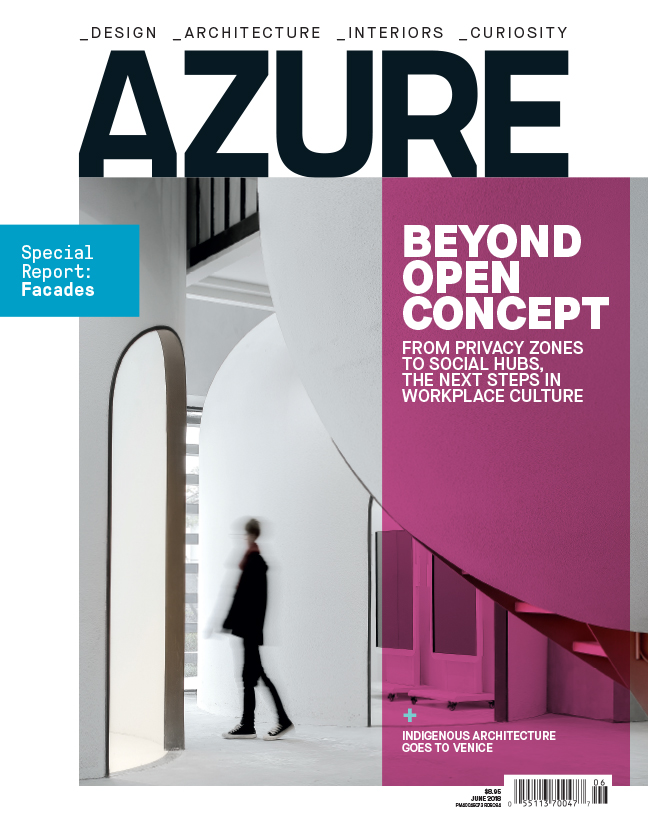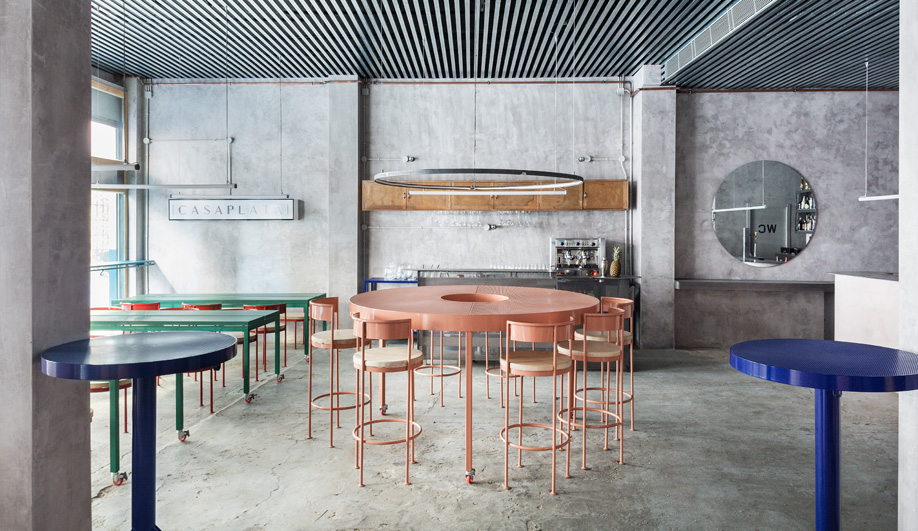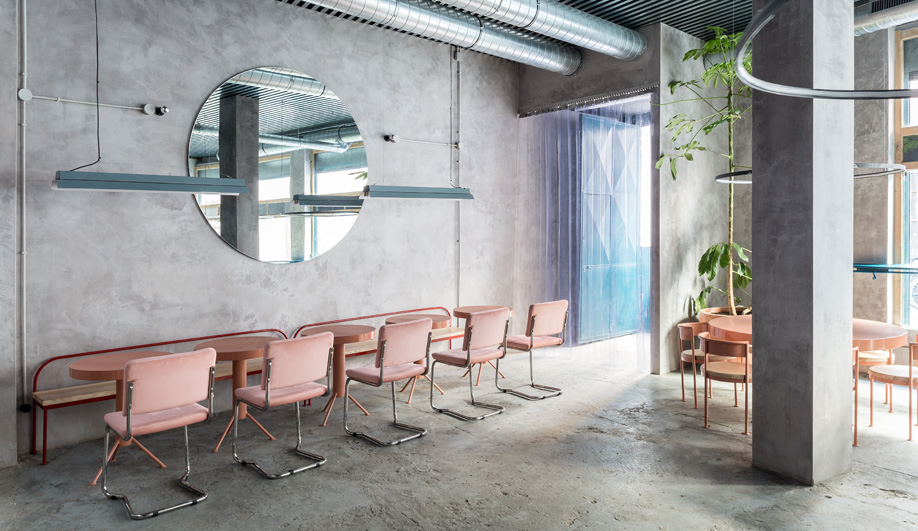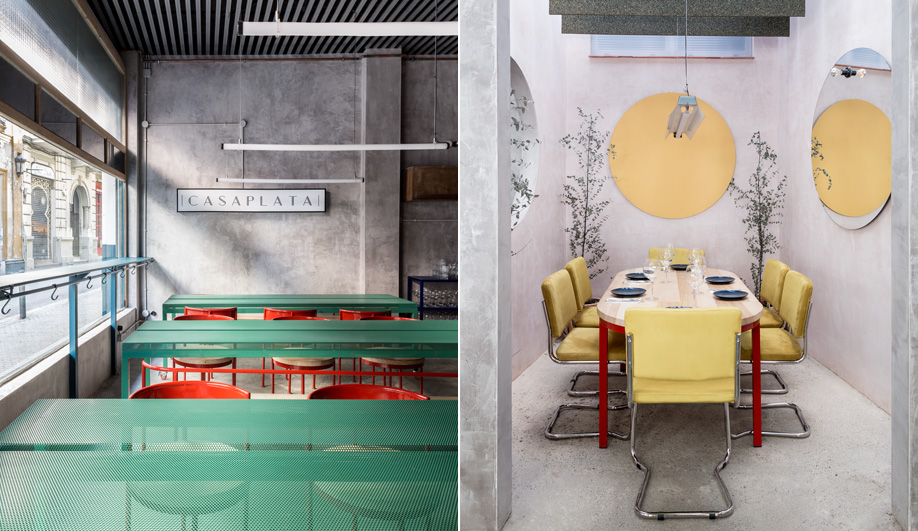At Seville restaurant Casaplata, architects Cristina Domínguez Lucas and Fernando Hernández-Gil enliven an austere shell with judicious hits of colour.
Tell people in Spain that you’re going to Casaplata and they might think you’re heading to an old-fashioned silver shop: Casaplata is Spanish for “silverhouse.” In Seville, however, Casaplata is also a restaurant that recently opened in La Alameda, an up-and-coming district in the city.
The architects, Cristina Domínguez Lucas and Fernando Hernández-Gil of Madrid, had completed another eatery, El Pintón, for one of Casaplata’s owners, who approached them again for this new venture. The idea was to transform an uninteresting cafeteria that had occupied the site since the 1990s into a contemporary tapas and cocktail bar. The result is a 150-square-metre space that mixes colour and concrete to dramatic effect and accommodates up to 80 diners.
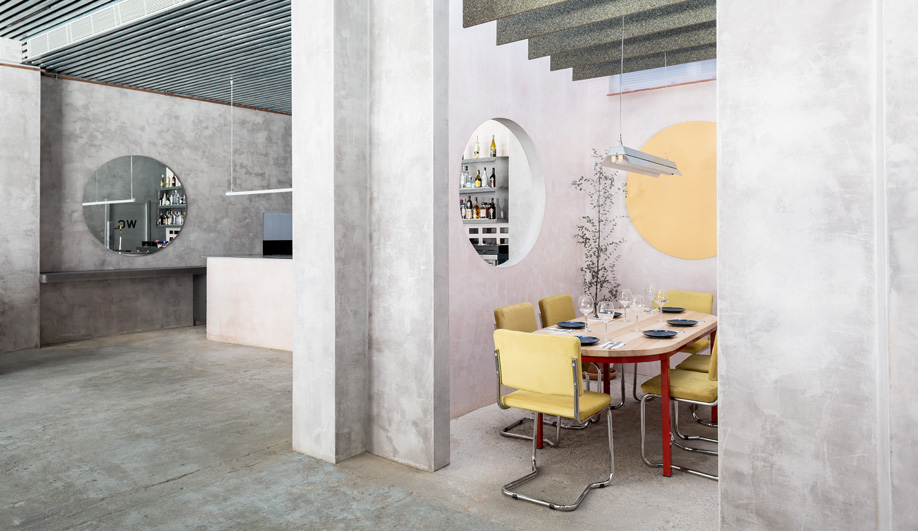
The first step the architects took was stripping the space down to its raw, post-industrial shell. They then organized the eatery around a pair of bar counters. Natural light comes from two street-facing windows and a skylight in a patio now serving as a private dining area. A porthole connects this room to the larger space, the circular shape echoed elsewhere by round mirrors of identical size and a decorative yellow circle painted on a wall.
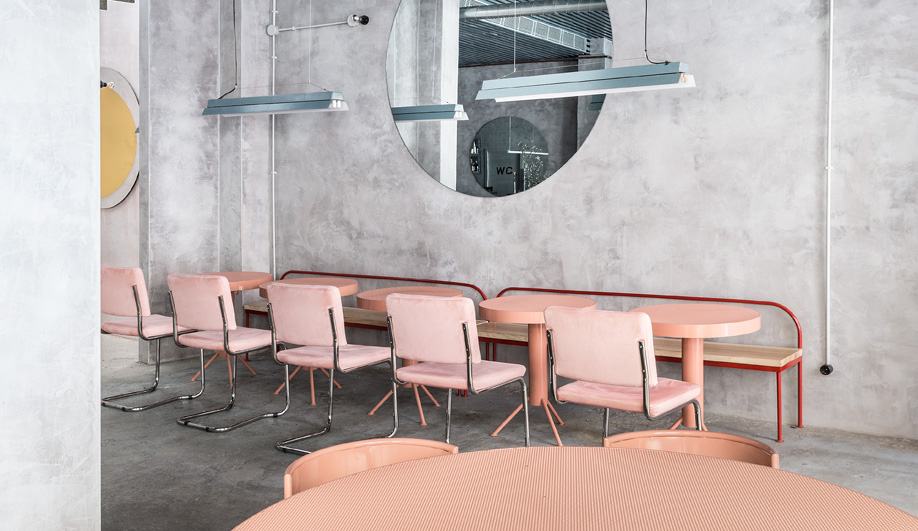
The circles counterbalance the rigid geometry of the rooms. Another softening tactic was the addition of pinkish pigment to the plaster used on the walls, a treatment that resulted in a silver-grey finish that significantly brightens the space. Against this neutral backdrop, variously toned furniture was arranged as if in a painting by Giorgio Morandi, the Italian artist who specialized in subtly shaded still lifes and served as inspiration for the project.
Except for a couple of vintage lamps and some Cesca chairs by Marcel Breuer, all of the tables, chairs, stools and lighting fixtures were designed by the architects, something they do under the name KrestaDesign. Pieces include tables made of perforated lacquered metal that provides both texture and transparency (diners can see the grey floor through the tabletops). Some tables are also equipped with wheels to facilitate different groupings.
The graphic, clean-lined lighting fixtures, meanwhile, further reinforce the geometry of the building. Among the most prominent is a large circular one hanging in the main dining area. LEDs create discreet tonal shifts as day progresses into night.
This story was taken from the June 2018 issue of Azure. Buy a copy of the issue here, or subscribe here.
